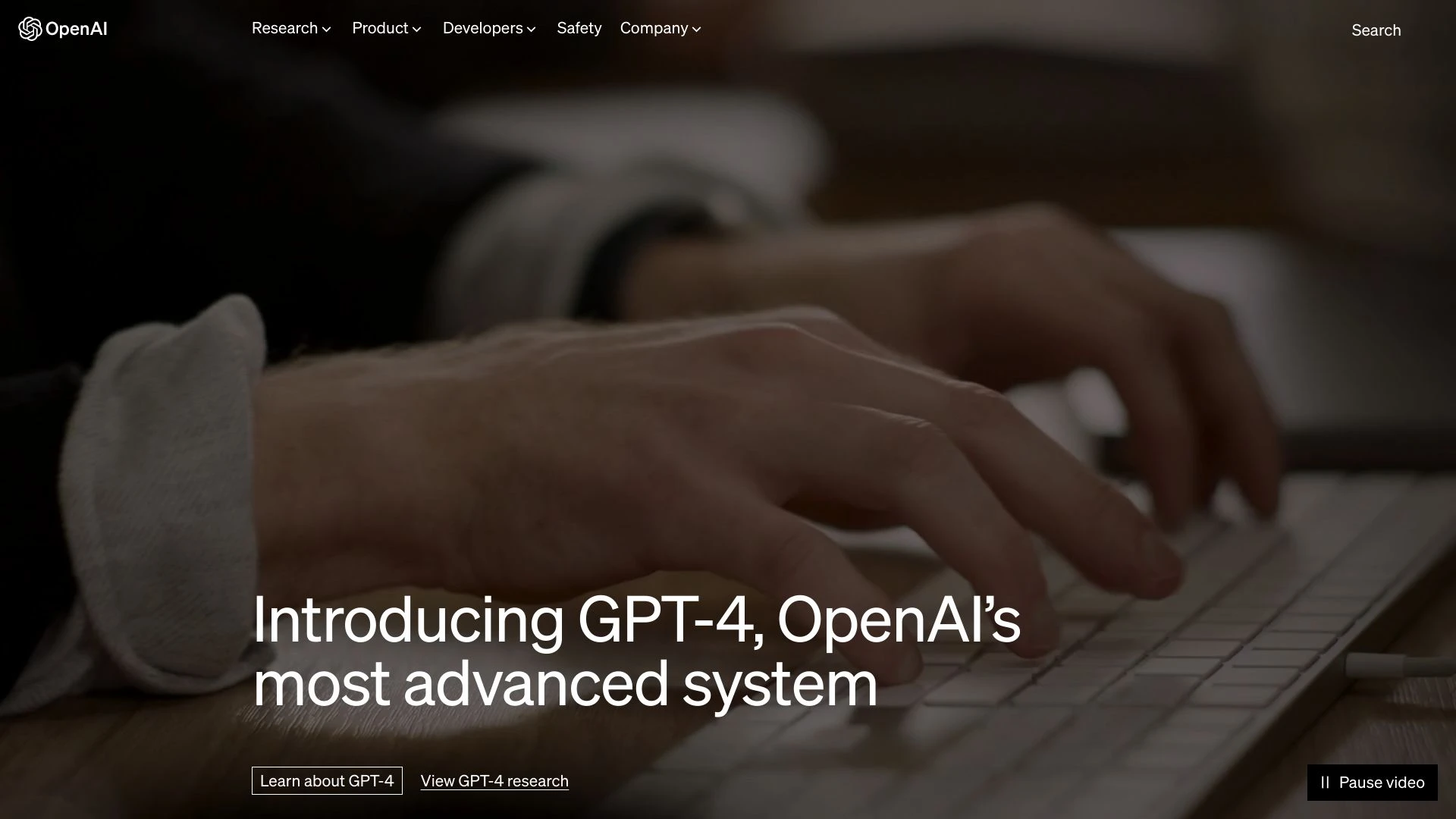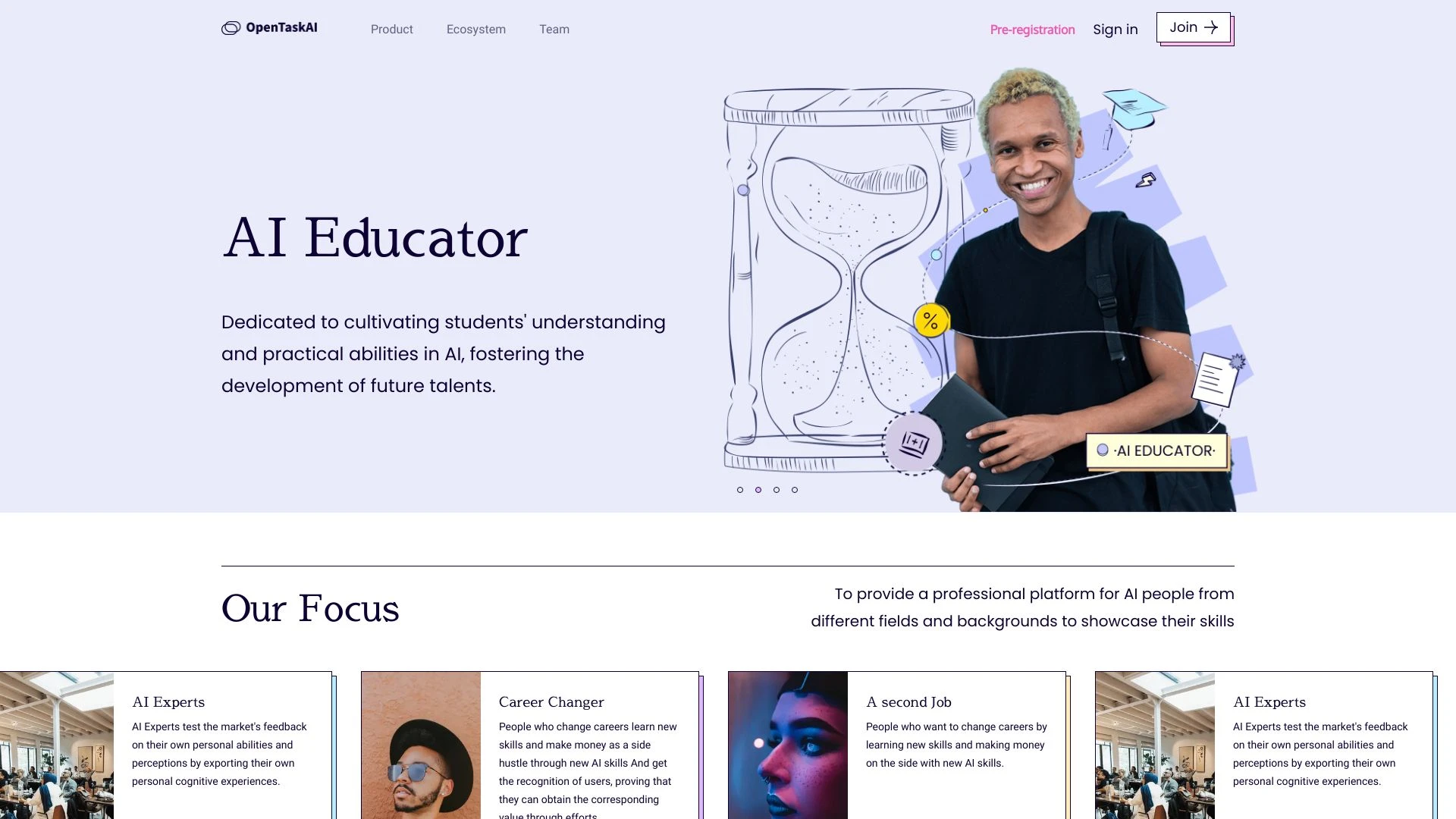OpenAI gegen OpenTaskAI
OpenAI gegründet im Dezember 2015 konzentriert sich auf die Entwicklung fortschrittlicher KI-Technologien wie GPT-Modelle für verschiedene Anwendungen Zielgruppen sind Entwickler Unternehmen und Forscher OpenTaskAI gestartet im 2022 zielt darauf ab die Produktivität durch KI-gesteuertes Aufgabenmanagement zu verbessern und richtet sich an Fachleute und Teams Beide innovieren im Bereich KI bedienen jedoch unterschiedliche Benutzerbedürfnisse und Funktionen


OpenAI
Ideal Für
AI-Entwicklung und Forschung
Branchenspezifische KI-Anwendungen
Steigerung der organisatorischen Produktivität
Kreativität durch KI erforschen
Wichtige Stärken
Zugang zu hochmodernen KI-Modellen
Unterstützung für vielfältige Anwendungen
Beiträge zur KI-Sicherheit
Kernfunktionen
Pionierforschung zu AGI API-Zugang zu den neuesten Modellen Steigerung der Produktivität in verschiedenen Sektoren Transformative KI-Anwendungen Engagement für KI-Sicherheit und Vorteile Umfassendes Verständnis der KI-Risiken
OpenTaskAI
Ideal Für
Online arbeitende Menschen
Angestellte mit KI-Fähigkeiten
Studierende im Bereich KI
Unternehmen, die KI-Expertise suchen
Wichtige Stärken
Zugang zu globalem KI-Talent
Partnerschaftsmöglichkeiten mit Universitäten
Verfügbare Werkzeuge zur Fähigkeitenverbesserung
Kernfunktionen
AI-Dienst
AI-Fähigkeiten
AI-Künstler
AI-Anwendungen
AI-Webseiten
Beliebtheit
Entscheidungs-Matrix
| Faktor | OpenAI | OpenTaskAI |
|---|---|---|
| Ease of Use |
|
|
| Features |
|
|
| Value for Money |
|
|
| Interface Design |
|
|
| Learning Curve |
|
|
| Customization Options |
|
|
Schnelle Entscheidungsanleitung
- Du willst hochmoderne natürliche Sprachverarbeitung
- Du strebst nach nahtloser integration mit verschiedenen plattformen
- Du schätzt skalierbare Lösungen für verschiedene Anwendungen.
- Du suchst nach einer benutzerfreundlichen Oberfläche und Unterstützung.
- Du benötigst zuverlässige Ergebnisse mit kontinuierlichen Verbesserungen.
- Du möchtest optimierte Aufgabenverwaltungsfunktionen.
- Du strebst nach nahtlosen Teamzusammenarbeitstools
- Du schätzt intuitives benutzeroberflächendesign
- Du suchst nach KI-gesteuerten Erkenntnissen zur Steigerung der Produktivität
- Du möchtest zuverlässigen Kundenservice und Ressourcen.
Was Unsere Experten Sagen
OpenAI glänzt in der Verarbeitung natürlicher Sprache was es ideal für konversationale KI Content-Erstellung und Programmierhilfe macht. Es bietet robuste APIs und umfangreiche Dokumentation. Im Gegensatz dazu konzentriert sich OpenTaskAI auf Aufgabenautomatisierung und Orchestrierung was sich als effektiv für Projektmanagement und Workflow-Effizienz erweist. Häufige Herausforderungen umfassen die Integration in beiden Tools aber OpenAI brilliert in Vielseitigkeit während OpenTaskAI in der Aufgabenoptimierung glänzt.
Jamie Davis
Software Analyst
Bei einem Blick
OpenAI bietet fortgeschrittene Modelle wie ChatGPT, die in der Verarbeitung und Generierung natürlicher Sprache hervorragend sind. OpenTaskAI konzentriert sich auf aufgabenspezifische Lösungen und optimiert die Produktivität. Vorteile: OpenAI ist vielseitig und weit verbreitet; OpenTaskAI ist maßgeschneidert und effizient für spezifische Aufgaben. Nachteile: OpenAI kann ressourcenintensiv sein; OpenTaskAI könnte breitere Fähigkeiten fehlen. Empfehlung: Verwenden Sie OpenAI für allgemeine KI-Anwendungen und Kundeninteraktionen, während OpenTaskAI besser für spezialisiertes Aufgabenmanagement und Automatisierung geeignet ist.
Preisgestaltungs- und Abonnementpläne
OpenAI bietet ein gestuftes Abonnementmodell an, das mit einer kostenlosen Stufe beginnt und dann auf 20 USD/Monat für den Plus-Plan ansteigt, der verbesserten Zugang und schnellere Antwortzeiten bietet. OpenTaskAI hingegen bietet flexible Preisgestaltung basierend auf der Nutzung mit Plänen ab 10 USD/Nutzer/Monat, was für kleine Unternehmen attraktiv ist. Für größere Unternehmen bieten beide maßgeschneiderte Lösungen an. Insgesamt könnte OpenAI für hochvolumige Nutzer kostengünstiger sein, während OpenTaskAI für budgetbewusste kleine Firmen geeignet ist.
Leistungskennzahlen
OpenAI typischerweise übertrifft in Geschwindigkeit und Genauigkeit, nutzt fortschrittliche Modelle wie GPT-3 für verschiedene Anwendungen. OpenTaskAI, während zuverlässig für aufgabenbezogene Szenarien, kann in allgemeiner Genauigkeit zurückfallen aber bietet überlegene Leistung in Nischenaufgaben. In komplexen Anfragen übertrifft OpenAI oft, während OpenTaskAI in gezielten, strukturierten Umgebungen glänzt.
Benutzererfahrung
OpenAI bietet eine schlanke, intuitiv gestaltete Oberfläche mit einfacher Navigation, die sie benutzerfreundlich für Anfänger macht. Anpassungsfähigkeit ist begrenzt, aber effektiv für Standardaufgaben. Im Gegensatz dazu betont OpenTaskAI umfangreiche Anpassungsfähigkeit, die es Benutzern ermöglicht, ihre Erfahrung tiefgehend anzupassen. Dies kann jedoch zu einer steileren Lernkurve führen. Beide Plattformen bieten Benutzersupport, aber die Ressourcen von OpenAI sind umfangreicher, einschließlich Tutorials und Community-Foren.
Integrationen und Kompatibilität
OpenAI integriert mit Drittanbieter-Apps wie Microsoft Office und Slack und verbessert die Produktivität. OpenTaskAI unterstützt Integrationen mit Tools wie Asana und Trello und optimiert das Aufgabenmanagement. Beide optimieren Workflows, aber OpenAI hat eine breitere Unternehmenskompatibilität und App-Unterstützung.
Einschränkungen und Nachteile
OpenAI steht vor Problemen wie Datenverzerrung und hohem Ressourcenbedarf. OpenTaskAIs Einschränkungen umfassen Aufgabenspezifität und Integrationshindernisse. Allgemeine Nachteile sind die Abhängigkeit von Trainingsdaten und kontextuelle Missverständnisse. Alternativen umfassen vielfältige Datensätze und modulare Aufgabendesigns.